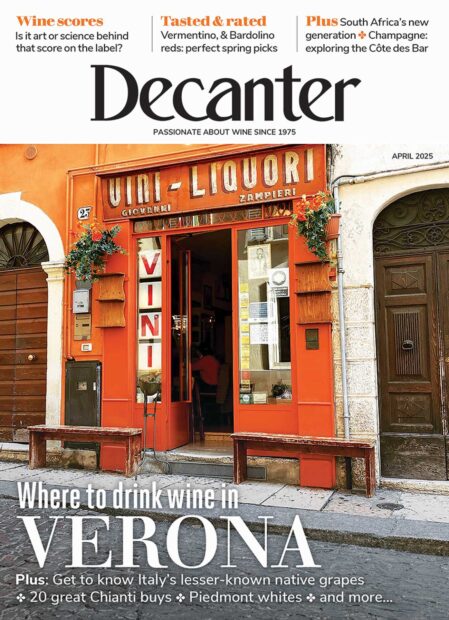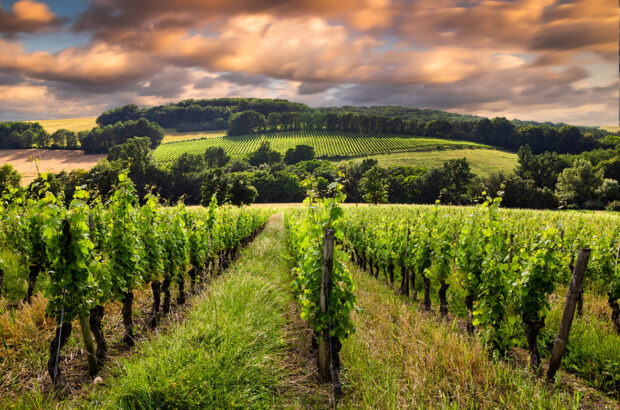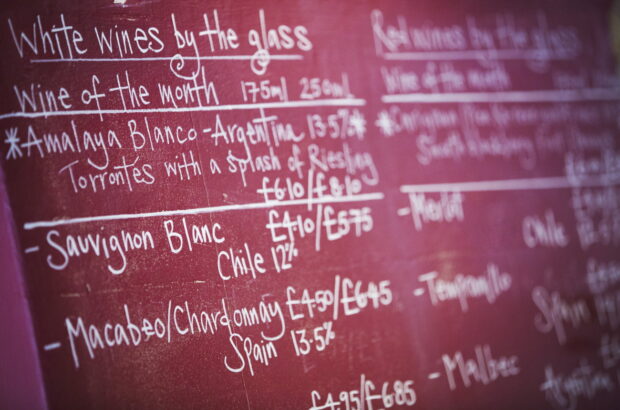In Splendid Isolation: Some 400km from Perth, Western Australia’s Great Southern is a wild, untamed region. But so fine and vibrant are its wines that WA’s major players are going out of their way to move in, says James Lawther MW
When the viticulturist at Gibraltar Rock decided to run guinea fowl in the vineyard, 40 out of 130 of them were snatched by eagles in one day. It’s a brazen reminder that Western Australia’s Great Southern is a wild, isolated region where the untamed Australian bush still has the upper hand over any agricultural activity.
Approximately 400 kilometres south of Perth, Great Southern owes its existence as a wine region to a visiting American professor, some experimental plantings and the need for local sheep farmers to diversify. In 1955, viticulturist Harold Olmo from California concluded that the cooler climate of the Mount Barker-Frankland area north of the former whaling station at Albany was well suited to viticulture and the production of wines in a lighter, finer style.
https://www.decanter.com/wine-news/obituary-harold-p-olmo-93880/
Ten years later, the Western Australian Department of Agriculture followed the recommendation by planting an experimental vineyard at Forest Hill in Mount Barker, a region formerly known for apples. The results were positive and a catalyst for vineyard developments in the late 1960s and early 1970s. These plantings were led by sheep farmers eager to branch out as the prices for wool and stock plummeted. Tony Smith at Plantagenet, Merv and Judy Lange of Alkoomi and the Goundrey family were among the early pioneers.
The quality and vibrancy of their fruit from the Great Southern soon came to the attention of the major Western Australian players. Houghton was one of the first to source fruit from the region and – along with the likes of Vasse Felix, Sandalford and Capel Vale – now owns or controls vineyards across the district. For locals, one of the vexing matters about this investment is that their fruit is often used in multi-regional blends, and the Great Southern ‘brand’ is ignored.
More recent expansion has been led by the pioneering wineries (Goundrey), as well as by private entrepreneurs (Howard Park) and investors drawn by government tax break schemes (Ferngrove). Smaller wineries have continued to spring up, but most are reliant on contract winemaking and local sales. Wine tourism is less developed than further north in Margaret River, but this has evolved with the opening of a number of modern cellar door operations (Forest Hill, Howard Park, Goundrey). All told there are approximately 3,500ha (hectares) under vine within an area stretching 100 kilometres east to west and 120km north to south. Vineyards are located in five demarcated sub-regions: Frankland River, Mount Barker, Porongurup, Denmark and Albany.
https://www.decanter.com/wine-news/vincor-buys-goundrey-105715/
Sandy, gravelly loams are common to all, but there’s a nuanced variation to the cool-climate conditions and, accordingly, grape varieties that are best suited to each. Denmark, with its picturesque bays and dense karri forest, and Albany to the east have a maritime influence including higher rainfall, and so are best for whites, particularly elegant, restrained Chardonnay.
Just north of Albany, the Porongurups are the world’s oldest mountain range, formed 1,000 million years ago. Granite outcrops etch the skyline behind vineyards planted at an elevation of 200- 400 metres. Most are owned by small producers, the exception being the expanding plantings of Howard Park. Delicate, floral Riesling does best in this cool zone, with a potential for crisp Chardonnay.
Inland still but further west, the rolling hills of Mount Barker experience a more continental climate. Rainfall is lower than in Denmark and there’s greater variability between day and night time temperatures. Riesling again does well, but there’s also some lively, peppery Shiraz and dark, juicy Cabernet Sauvignon.
Frankland River also experiences a continental influence with warm days and cool evenings, but is drier still. (Olives are being successfully grown here.) The long ripening period gives vibrant fruit flavours and there’s a range of toothsome varieties, in particular Riesling, Shiraz and Cabernet Sauvignon.
Vintage variation is quite pronounced in Western Australia’s Great Southern. The best recent vintages for both red and white are 2001 and 2004. In between, 2003 was variable, while 2000 was spoiled by vintage rain and 2002 was cool but good for whites. Rain fell during the harvest in 2005 but whites are good, and also some reds if the grapes were picked before the downpour. Cyclonic activity further north in the state resulted in cool, mild, wet conditions in 2006 and what looks to be a generally mediocre vintage.
New Faces
Castle Rock Estate
A winery of human scale, Castle Rock estate has been making steady progress since Rob Diletti took over winemaking in 2001. His father, Angelo (yes, there’s Italian ancestry), established the impeccably run 12ha vineyard on the slopes of the Porongurups in 1983. Until 2000, the wines were made under contract at Alkoomi, but in 2001 a gravity-fed winery was built, and Diletti, who trained under Charles Sturt, entered the fray. The whites (Riesling and Sauvignon Blanc) are clean and fresh, the Shiraz medium-bodied and peppery and the almost Burgundian 2004 Pinot Noir the best I tasted in Great Southern.
Ferngrove
Ferngrove’s rise to fame has been both rapid and spectacular. Based in Frankland River, the vineyards were established in 1998, a modern winery with visitor facilities constructed in 1999 and the first commercial vintage produced in 2000. In very little time the vineyards have grown to 370ha, production is at 80,000 cases and the wines have started to garner medals on the Australian show circuit. Financed by a large core of investors lured by a government tax break scheme, this ambitious enterprise also had the temerity to hire a young and talented winemaker, Kim Horton. Given the age of the vines, the wines (all from estate-grown grapes) are remarkably good across the board and if anything are made to indulge the youthful opulence of the fruit. Particularly recommended are the Majestic Cabernet Sauvignon, King Malbec and Cossack Riesling.
Forest Hill
Forest Hill is both an old and a new concern. The core of this label is the 2ha block of Cabernet Sauvignon and Riesling planted on the Forest Hill site in Mount Barker by the Western Australian Department of Agriculture in 1965. The fruit was initially processed by Houghton and Sandalford, but in 1989 the vineyard was purchased by Robert Holmes à Court of Vasse Felix, with the Forest Hill label remaining a small, quality brand. The modern history starts in 1996 when Perth stockbroker Tim Lyons acquired the vineyard and started to expand and promote the label. New vineyards were planted in Mount Barker, and in 2003 a modern winery with cellar door sales and a restaurant was opened in Denmark. The quality of the fruit is evident, and the wines are gaining in finesse under the guiding hand of winemaker Shane McKerrow. They are available abroad under the Indis label.
Harewood Estate
This Denmark property is very much on the up. As winemaker at Howard Park from 1998 to 2003, James Kellie also had responsibility for making the Harewood Estate wines under contract. So when the property came up for sale, he and his family decided to invest. A winery was rapidly constructed for the 2004 vintage, the first under Kellie ownership. The cornerstone of the enterprise is the Chardonnay produced from the 9ha estate vineyard planted in 1988. There’s also a little Pinot Noir. Other wines in the range are produced from fruit sourced within Great Southern, and Kellie’s experience at Howard Park is standing him in good stead for this task. There’s a purity and freshness to the wines, which is typical of the region. Among them, I would particularly recommend the Chardonnay, Riesling, Cabernet-Merlot blend and Shiraz.
West Cape Howe
Based in Denmark, West Cape Howe was originally established in 1997, primarily as a contract winemaking facility. In 2003, the business was sold to a partnership that includes Gavin Berry, winemaker at Plantagenet for 16 years, and the decision was taken to concentrate on the West Cape Howe brand. One of the principal sources of fruit is the 80ha Lansdale Vineyards property in Mount Barker, planted in 1989. ‘I’m a relatively uncomplicated winemaker; it’s what goes on in the vineyards that counts,’ says Berry. Production has now increased to 50,000 cases of the ‘value’ level Western Australian Range and a finer, limited edition Great Southern Range. Both the oaked and unoaked Chardonnays look good here, as do the Cabernet Sauvignon and the unusual, summer-fruited Tempranillo.
Key Players
Alkoomi
Pioneering Frankland growers Merv and Judy Lange first planted vines (mainly Cabernet Sauvignon and Riesling) on their grain and sheep property in 1971 and produced an initial vintage in 1976. Thirty years on they have an annual production of 80,000 cases, all sourced from their own vineyards, which have swelled to 102ha. Alkoomi is one of the region’s success stories, with wines of a consistent quality, style and flavour. The vineyards are the key to this, as is the continuity provided by winemaker Michael Staniford since his arrival in 1995. ‘We pick on flavour and aim for gentle extraction,’ he says. Wines across the range are excellent but of particular note are the ripe, generous Jarrah Shiraz and stylish Blackbutt Bordeaux blend (both named after native trees). The black label Cabernet Sauvignon provides good value.
Frankland Estate
Barrie Smith and Judi Cullam run this estate with a great deal of zest and passion. A tour of French vineyards in 1985 prompted the diversification from sheep farming (though they still run 4,000 merinos), and the first vines in their 30ha gravel and loam Isolation Ridge vineyard were planted in 1988. Riesling, Shiraz and the Bordeaux varieties, in particular Cabernet Franc and Merlot, were among the early plantings. ‘We wanted to make a Right Bank Bordeaux style wine,’ explains Cullam. Olmo’s Ridge was born of this approach, the first vintage (1992) being made at Alkoomi, a year before Frankland’s winery was built. The estate wines all come from organically grown Isolation Ridge fruit, including the minerally Riesling and firm, dark-berried Shiraz. Two other single-vineyard Rieslings (Cooladerra and Poison Hill) are sourced from fruit grown in Frankland, as are the wines of the good-value Rocky Gully label.
Goundrey
This is now one of the biggest producers in Great Southern, but it has had a chequered career since establishment in the 1970s. Michael Goundrey planted the first vines at Windy Hill in Mount Barker in 1971, producing an initial vintage in 1976. New investors joined in the 1980s, but the business ran into financial difficulties and was bought by Perth businessman Jack Bendat in 1995. He invested in a new winery and vineyards, increasing plantings in Mount Barker to 285ha and pushing production from 17,000 to 250,000 cases (from a mix of estate and contract fruit). In 2002, Goundrey was bought by Canadian company Vincor (now part of Constellation Brands) and production has since risen to 350,000 cases. In ascending order of price there are three brands: Homestead, Offspring and Reserve. The wines are sound rather than exciting, but look for the Reserve Riesling, Offspring Cabernet and unwooded Homestead Chardonnay.
Howard Park
With wineries in both Denmark and Margaret River, and the fruit-driven Madfish label also part of the portfolio, Howard Park has become a serious, 300,000-case concern. Established in Great Southern in 1986 by consultant John Wade, the wines were made from contracted fruit and produced initially at Alkoomi and Plantagenet. Perth-based businessman Jeff Burch and his wife Amy joined in 1993 to help finance and promote the brand and now own the company. The Denmark winery was established in 1997. Contract growers still provide the bulk of the fruit, but a vineyard is being developed in the Porongurups, as is another in Margaret River. The wines are mainly cross-regional blends from the Great Southern and Margaret River, but specific to Great Southern are the Howard Park Riesling and Howard Park Scotsdale Shiraz and Cabernet Sauvignon. The quality level is good to very good across the range.
Plantagenet
Plantagenet was the first commercial winery in Mount Barker. Founder Tony Smith planted Shiraz and Cabernet Sauvignon vines on his Bouverie property in 1968, producing an introductory vintage in 1974. The following year an apple-packing shed was converted into a winery. Fast forward 30 years and the company still has a family feel, but has inevitably evolved in size and form. Smith maintains a presence but Plantagenet is now owned by Perth-based businessman Lionel Samson and managed by Ian Mayo, formerly of Cape Mentelle in Margaret River. The vineyard has grown to 130ha split between four sites in Mount Barker, and supplies the majority of fruit for the Plantagenet label. Grapes for secondary labels Omrah, Hazard Hill and Hellfire Bay are sourced from throughout Western Australia. Quality is consistently good.
Lawther’s Top 10
Alkoomi, Jarrah Shiraz 2002 ????
Big but elegant. Real fruit intensity. Rounded tannins with well-integrated French oak. Drink now-2012. £15.10; Jer, Lay
Castle Rock Estate, Riesling 2005 ????
Pale, green-flecked hue. Delicate, floral, acacia nose. Very fine. Good depth of fruit with crisp acidity giving structure, line and length. Drink now-2015.
N/A UK; +61 898 531 035
Ferngrove, King Malbec 2004 ????
Deep red hue. Dundee cake aromas and flavour. Rich, generous fruit leading to a surprisingly crisp, dry finish. Drink now-2012. £11.99; Stf
Ferngrove, Majestic Cabernet Sauvignon 2004 ????
Lovely, vibrant blueberry fruit with a touch of vanilla oak. Fragrant and harmonious. Drink now-2012. £11.99; Stf
Forest Hill, Block 8 Chardonnay 2004 ????
Complex, almond and citrus fruit aromas. Soft, succulent fruit. Well-integrated oak. Long, clean finish. Pure and balanced. Drink now-2010. N/A UK; +61 898 482 199
Frankland Estate, Isolation Ridge Riesling 2005 ????
Tight, restrained, minerally. Firm and persistent. Very much a ‘terroir’ wine. Drink now-2015. £12.20; FMV
Harewood Estate, Cabernet-Merlot 2004 ????
Deep colour. Bright, ripe blackcurrant and blueberry. Smooth and succulent. Fresh finish. Drink now-2010. £12.95; GWW
Howard Park, Scotsdale Cabernet Sauvignon 2003 ????
New World meets Old World. Bright cassis flavour and aroma, with restraint. Firm but rounded tannins. Drink now-2013. £12.80; Bib
Plantagenet, Chardonnay 2004 ????
Pale straw colour. Crisp, clean, minerally, citrus aromas. Soft, layered texture. Filigreed oak. Honeyed edge. Attractive length and weight. Drink now-2010. £10.95; Lib
Xabregas, Show Reserve Shiraz 2004 ????
Crimson colour. Dark, spicy, cassis fruit. Well-integrated oak. Ripe but pure, fresh and balanced. Drink now-2010.
N/A UK; + 61 418 916 714
…and 10 great values
Alkoomi, Shiraz-Viognier 2004 ????
Tender, spicy, red berry fruit. Viognier lends a zesty edge. Delicious. Drink now-2009. £9.95; Jer, Lay
Harewood Estate, Riesling 2005 ????
Pale hue. Fragrant, floral-citrus nose. Core of pure citrus fruit on the palate. Lovely volume and length. Drink now-2012. £8.95; GWW
Rocky Gully, Shiraz-Viognier 2004 ????
Spicy, peppery Shiraz with a hint of violet. Almost Northern Rhône. Fragrant and funky, fresh and balanced. Drink now-2009. £10; FMV
Gibraltar Rock, Riesling 2005 ???
Delicate floral tones. Palate lively, taut, sappy and long. Will open up with age. Drink now-2015.
N/A UK; +61 898 531 177
Goundrey, Homestead Unwooded Chardonnay 2005 ???
Stone fruit flavours and aromas. Good intensity of fruit. Clean, fresh and harmonious. Drink now. £6.99; Cln
Goundrey, Offspring Cabernet Sauvignon 2003 ???
Cassis aroma and flavour with a little spice. Attractive ripeness, depth and volume. Drink now-2008. £8.99; Cln
Indis (Forest Hill), Shiraz 2004 ???
Dark colour. Rich, full bodied wine. Cassis, eucalyptus aroma and flavour. Plenty of extract. Drink now-2009. £9.50; AWO
Madfish, Riesling 2005 ???
Floral, lime tree and nectarine aromas. Soft, mid-palate fruit. Crisp, fresh finish. Drink now-2012. £8.37; Bib
Plantagenet, Hellfire Bay Chardonnay 2004 ???
Pale gold. Pear and nectarine notes. Oak well handled. Good mid-palate then a fine, linear finish. Drink now. £6.75; Lib
West Cape Howe, Unwooded Chardonnay 2005 ???
Citrus stone fruit. Soft, easy drinking. Crisp acidity on the finish. Drink now.
N/A UK; +61 898 482 959
Great Southern: Know Your Vintages
2005 ??? Excellent whites. Some good reds if picked before the heavy late March rain, otherwise poor. Drink/keep.
2004 ???? Indian summer. Warm, settled weather. Good for both red and white. Drink/keep.
2003 ??? Difficult, uneven vintage with drought then rain. Chardonnay and Shiraz best. Drink.
2002 ??? Cool, dry year. Low crop. Whites best. Reds leaner in style.
Drink/keep.
2001 ????? Warm, dry year. Good whites and excellent reds with ageing potential. Drink/keep.
2000 ??? Cool year. Late season rain. Whites best as well as some Frankland reds. Drink.







